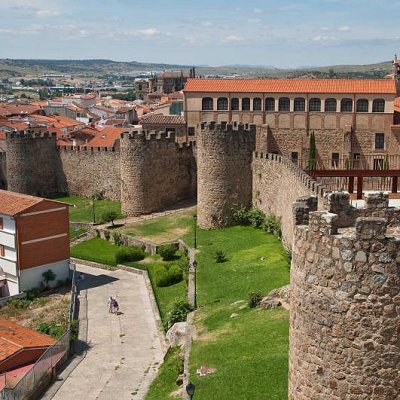
Like us on Facebook
PLACE NAMES




|
|
Plasencia
|

|
|
Plasencia is a walled market city in the province of Cáceres, Extremadura, Western Spain. As of 2013, it has a population of 41,047.
Situated on the bank of the Jerte River, Plasencia has a historic quarter that is a consequence of the city's strategic location along the Silver Route, or Ruta de la Plata. Since the 15th century, the noblemen of the region began to move to Plasencia, defining its current appearance.
Main sights include:
- The double line of walls, with six gates and 68 towers, dating to 1197. The Keep (or Alcázar) was demolished in 1941.
- Remains of a 16C aqueduct, locally called Arcos de San Antón.
- Las Catedrales, a complex of two cathedrals. In 1189, by request of Alfonso VIII, Plasencia was declared head of dioceses by Pope Clement III and work on a Romanesque Cathedral started shortly after, concluding sometime in the 18th century, by which time fashions had changed and Gothic elements had been added in the forms of pointed arches to the Nave and a rose window to the main South Entrance, while the cloister, on the East side bordering the city walls, was entirely Gothic. In the 15th century the Dioceses decided to build a grand Gothic Cathedral in the same site, demolishing the old cathedral as the new one was being built. Work started in 1498 and by the 16th century, standard Renaissance elements had been added such as the East Entrance and the elaborate Choir Seating, while the local style of the period, Plateresque, is present in the West (main) and the Presbytery Entrances. Work continued until the 18th century, when, with only the Sanctuary and the Transept of the New Cathedral finished, the project was abandoned leaving behind a somewhat odd result, as most of the Nave of the Old Cathedral, its cloister and its unique Octagonal Tower housing the Sala Capitular Chapel is still attached to the New Cathedral, while the new choir, that was supposed to stand along the New Nave, was positioned across the transept. In the Main Chapel, there is an altarpiece by Gregorio Fernández (17th century), and the choir by Rodrigo Alemán.
- The Museum, near the Cathedral, is home to artworks by Jusepe de Ribera and Luis de Morales.
- Renaissance Town Hall, in the Plaza Mayor
- Casa consistorial (16th-18th centuries)
- Palacio de los marqueses de Mirabel (16th century) with a two-order court
- Church of San Martín (13th century). It has a nave and two aisles, and a retablo by Luis de Morales (1570).
- Church and convent of Santo Domingo (St. Dominic, mid-15th century)
- Church of San Esteban (15th century), with an apse in Gothic style. The high altar is transitional Plateresque-Baroque style.
- Sanctuary of Virgen del Puerto, some 5 kilometers from the city, begun in the 15th century but finished three centuries later.
- Nature resorts include the Monfragüe National Park.
- Canchos de Ramiro y Ladronera Protected Area.
 Feel free to Email me any additions or corrections Feel free to Email me any additions or corrections
LINKS AVAILABLE TO YOUR SITE
| | |





